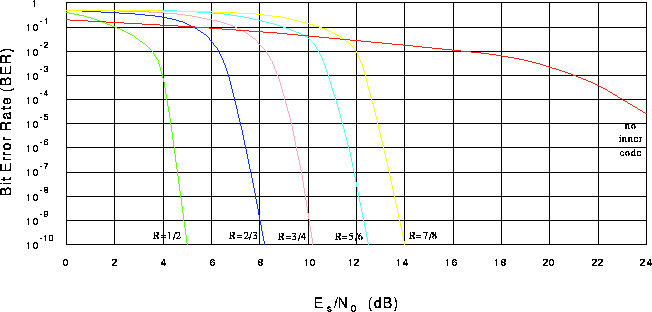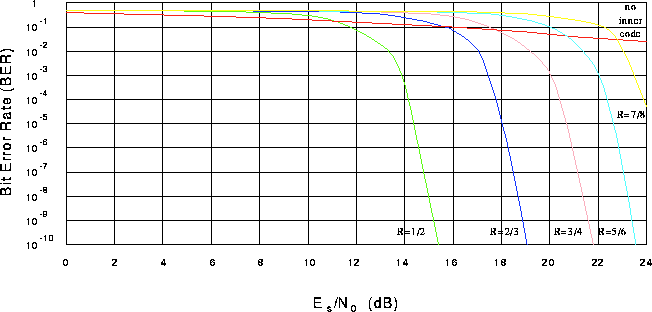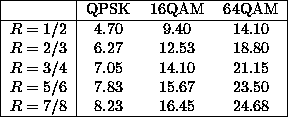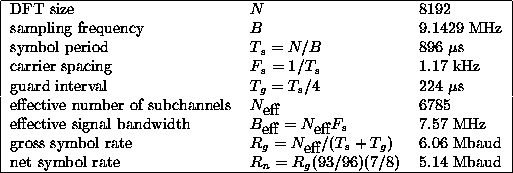
 |
JPL's Wireless Communication Reference WebsiteChapter: Network Concepts and Standards
|
Contributed by Paul G.M. de Bot and Flavio Daffara

BER of 4-QAM with concatenated coding on a Rayleigh channel, for different inner code rates R

BER of 64-QAM with concatenated coding on a Rayleigh channel, for different inner code rates R
The Bit Error Rate curves are given for a few modulation / code combinations on a Rayleigh channel. It can be seen, that the required SNR ranges from less than 5 to more than 25 dB, depending on the transmission mode.
The net bit rate can be calculated from the net symbol rate, and depends on the modulation and coding.

Table: Net Bit Rate (in Mbit/s) of a Typical DTTB System (see below),
for different modulation schemes and inner convolutional code rates R.
